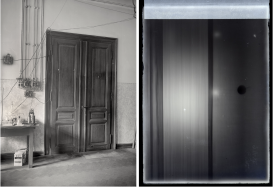This project traces a radical shift in understanding material boundaries at the turn of the twentieth century, which was tied to the scientific visualization of everyday objects using newfound radiation phenomena. More specifically, drawing my method from the hermeneutics of objects, I examine the transformation of ordinary things into wonders of scientific inquiry in the intellectual lineage of three interconnected scientific breakthroughs that occurred between 1895 and 1899: the discovery of x-rays, uranic rays, and radium rays. As I show, these breakthroughs involved experimenting with visualization techniques, subjecting everyday objects to radiation, and producing shadowgraphic representations. In a gradient of shadows, these representations provided the first visual evidence for the permeability of objects to irradiating energies. The penetrating force of radiation had a dematerializing effect, dissolving the rigid boundaries that defined and limited physical objects as discrete and localized. By transforming objects from familiar to foreign, I argue, the shadowgraphic representations stirred the scientific imagination concerning the very essence of matter. This moment in history signals a retraction of the ontological conception of objects as individually determinate entities, hence the primacy of beings over relations. I explore this critical moment in theorizing matter as open and porous and its implications for delimitating physical boundaries. Ultimately, the project aims to understand how the novel experiments on radiation phenomena have shaped our conceptualization of material limits in the broader field of object ontology.

